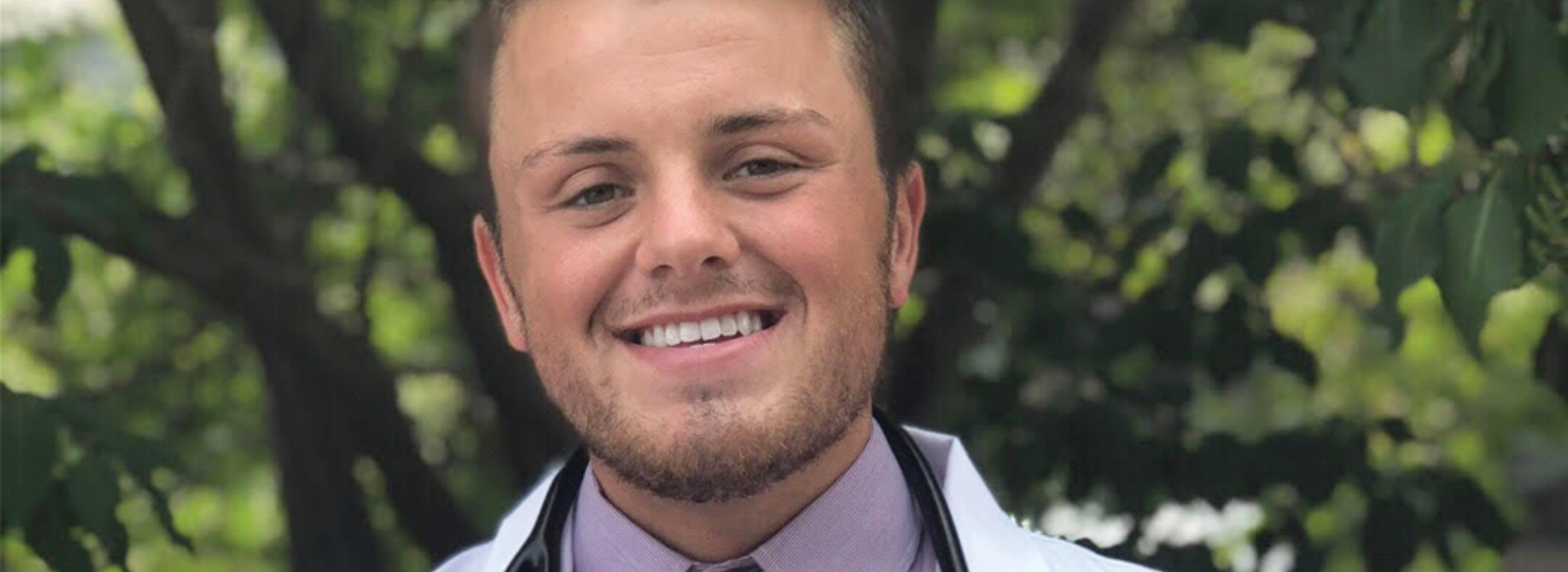
Equality in Medicine: Addressing LGBTQ+ Healthcare from a Medical Student's Perspective
In the last decade, medical education programs and healthcare experts have made efforts to improve the healthcare needs of LGBTQ+ patients. But there is still more to be done to enhance safe spaces and understanding of the LGBTQ+ community.
In honor of Pride Month, MS2 Duluth Campus student and 2022 Class President, Mitchell Moe, reflects on his own experiences growing up in rural Minnesota as an LGBTQ+ individual and the need for equality in medicine.
What inspired you to pursue medical school and your personal influences growing up in rural Minnesota as an LGBTQ individual?
I think all medical students have a multi-faceted answer to the question of why they decided to pursue medicine, but the one reason I always come back to, and which gets me through the tough nights, is my desire to create safe spaces and provide patient-centered care for underserved populations. Growing up in rural Minnesota as an LGBTQ+ individual is no easy task, and I know that from personal experience. I remember on various occasions throughout middle and high school wanting to ask someone at the clinic why I was having these thoughts and whether there was something wrong with me; asking a health professional seemed like the only safe, logical option to me. However, I always ended up opting against this because of the lack of confidentiality, opportunity to address such questions during clinical evaluations, and visibility for diversity in the clinic environment, as well as assumptions made by healthcare professionals.
My experiences have motivated me to establish a future practice that offers a welcoming environment to all, where patients are given an opportunity to ask questions and discuss anything they wish without bias or assumption. I want to provide a safe space for kids that I never had; I don’t want them to have to carry this heavy secret alone for as long as I did. The LGBTQ+ community needs more visibility and accessibility in medicine; concealing this part of one’s identity and all the questions/concerns that revolve around it year after year is detrimental to health and well-being.
What advice would you give to other healthcare professionals, and health professions students in creating safe spaces for patients?
I would encourage healthcare professionals and health professions students to not only be open and aware of providing care for diverse patients, but to also take action in their practices and clinics; it is one thing to say you are inclusive and accessible for all, but it is another thing to show this to your patients. Take time during the H&P to ask about gender and sexual identity. Ask more than once, and don’t make any assumptions; your knowledge on their relationship status does not give you the full story.
Healthcare starts the moment a patient walks in the door; every employee plays a role in their care and should thus take part in bringing inclusivity to a facility. Be conscientious of the physical environment of your practice and the clinic as a whole. Rainbow stickers on exam room doors would be great to see, even signage with statements like “All Are Welcome Here” or “This Is A Safe Space” can be a strong message to all patients as well. Reflect and do some research on the types of services an LGBTQ+ patient may require. HIV testing and counseling, LGBTQ-focused mental health services, hormone therapy, and gender-affirming surgery are a few such services; are you able to provide all of these, and if not, are you aware of where to refer patients who may be interested?
As a current medical student, what would you like to emphasize to others?
What I really love is that the faculty and staff on our Duluth Campus are willing to hear and work with new ideas, which has made it easy to integrate supplemental education opportunities. All of these things make our campus incredibly special, which only affirms once again that the Duluth Campus was the right school for me.
I would like to emphasize to others to always be diligent in building strong relationships with your patients and truly getting to know them. LGBTQ+ individuals exist in every community, whether they publicly identify as such or not, so it is essential for rural providers and clinics to make room for these patients. You very well could be the only person they have to help lighten the load of that weight if you just give them the opportunity to share it with you.